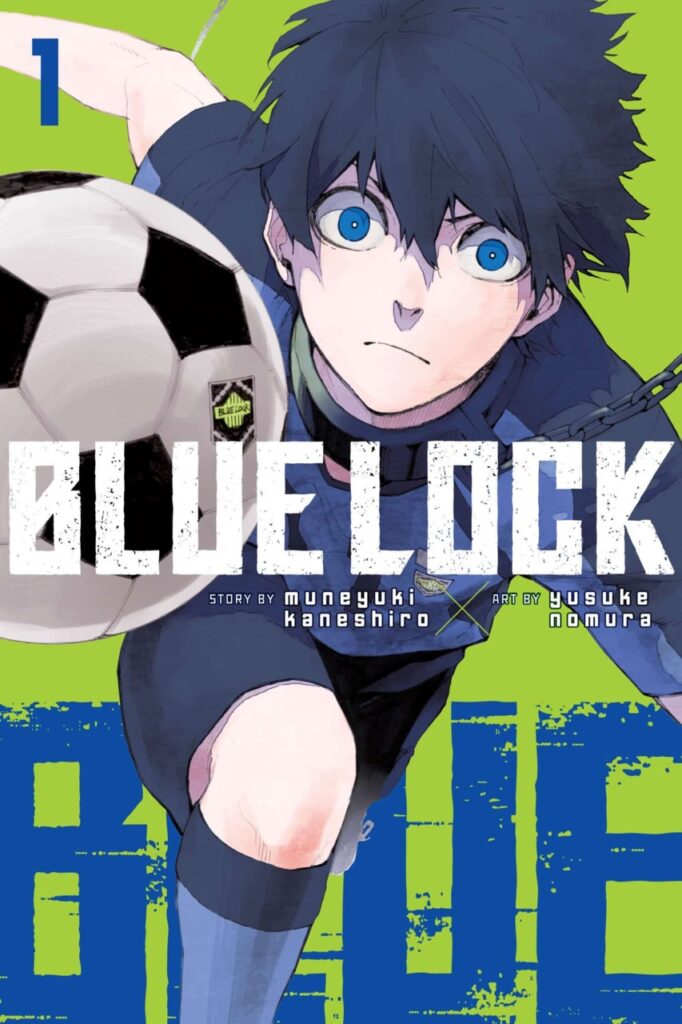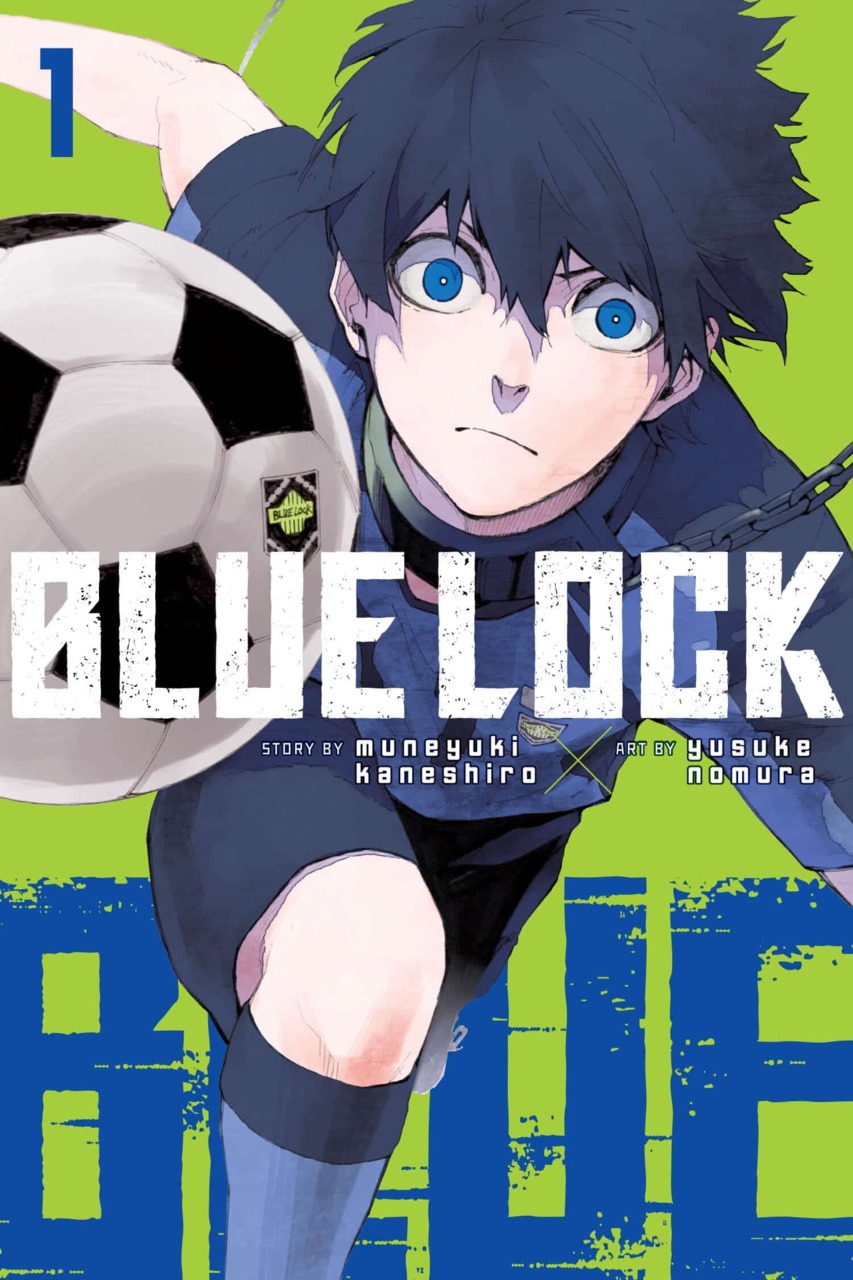Manga Review: Blue Lock 1 story by Muneyuki Kaneshiro, art by Yusuke Nomura
One of the stock characters found in sports stories, and especially shounen manga sports stories, is the “solo ace.” He (it’s almost always a “he) is extraordinarily skilled at the technical aspects of the sport. He runs the fastest, throws or kicks the ball the most accurately, hits the target consistently, etc. But he plays a team sport, and the one skill he’s never learned is teamwork. He’s often frustrated by the other players he’s forced to work with, who are not up to his level. His attitude is that they should “git gud or get out of my way.” At best he considers them a delivery system to get him the ball and keep the other team distracted.

If this character is on the protagonist’s side, he’s an aloof ally that must be won over by the talented but naive rookie, and eventually learns to mesh his playing style with the rest of the team, who will turn out to not be nearly as bad at sportsball as he initially thought. If the solo ace is an antagonist, his team will be an early obstacle for the protagonist team, seemingly unstoppable until the heroes realize his arrogance is a weakness and use their superior teamwork to defeat him. (Odds are even that he’ll become an ally later in the story.)
Main thing is, “teamwork is what makes the dream work” and this character type is meant to demonstrate the folly of not using teamwork.
Blue Lock asks, “but is that necessarily the best way to win soccer games?” The Japan Football Union has a new hot-blooded executive who points out that the Japanese teams have done..okay…in the World Cup, but never advanced past the “round of sixteen.” Anri Teieri has a plan. She’s hired eccentric genius coach Jinpachi Ego to institute the “Blue Lock” training course.
Ego’s idea is that Japanese soccer teams already have teamwork down just fine, there’s no path to improvement there. But games at the professional level are won by kicking the ball into the goal more times than your opponent, which is the job of strikers. And the best strikers, he thinks, are egoists who only care about how to score themselves, not about how to support the team.
“Blue Lock” (the meaning of the name is not disclosed in this volume) is a training facility where the top 300 potential high school strikers will be divided into 25 groups and forced to compete, with those that cannot advance being expelled, until one shining star is left, the new hero of Japanese soccer who will ensure World Cup victory. This does, of course, mean destroying the soccer dreams of 299 young Japanese players, but if the plan succeeds, it will be worth it.
The story proper begins with Yoichi Isagi, a striker for a Saitama Prefecture high school team. He’s been trained in the traditional “we win as a team” mindset, and done okay. It’s the prefectural championship, and if his team wins today, they go to the Nationals. There comes a moment where Yoichi has the ball, he’s in front of the goal, he could take the shot, but it’s risky. If he passes to his teammate, who is wide open, and is urging Yoichi to remember team play, that teammate will have a much easier shot. Yoichi passes, the teammate flubs the shot, and the other team goes to the Nationals.
It’s a sad day, but the coach is proud of his students’ teamwork and team spirit, and most of the team are of the same opinion. But Yoichi can’t help dwelling on what ifs and coulda beens. He’s surprised to be invited to a meeting set up by the Japan Football Union for young strikers, and even more surprised when he learns they’ve all been drafted into the Blue Lock program. At first, he’s reluctant, but then Ego mentions the exact sort of situation Yoichi was in before and suggests that taking the shot himself would have been the right choice.
This being a “training from Hell” scenario, no sooner has Yoichi gotten to meet his group (including the one guy he knows and likes) than they’re forced into an elimination tag match. Yoichi’s ranking is 299 of 300, so he’s going to need to step up a lot to even survive this first round of training!
The premise is interesting, combining the standard sports genre with the “survival game” subgenre (though most of the eliminated are presumably only going to wish they were dead.) Since survival games tend to have rules only revealed when they are suddenly relevant or hidden loopholes, there’s plenty of room for future twists.
The art does a good job of making soccer look exciting, and I suspect the characters will become more distinguishable as the story focuses on them more.
However, the series by its very nature tends to push a narrow set of personality types to the forefront, and not everyone is going to be down with a cast of egoists. And if you’re really hung up on teamwork as an ideal, the whole premise may strike you as flawed.
Content note: Shirtless boys, a bit of sports-related violence, some skeevy treatment of teenagers by the corporation. Junior high readers and up should be okay.
Recommended for shounen sports fans who want a little more self-centeredness in their protagonists.

